Fantastic Beasts: Parliament’s supernatural creatures, part one
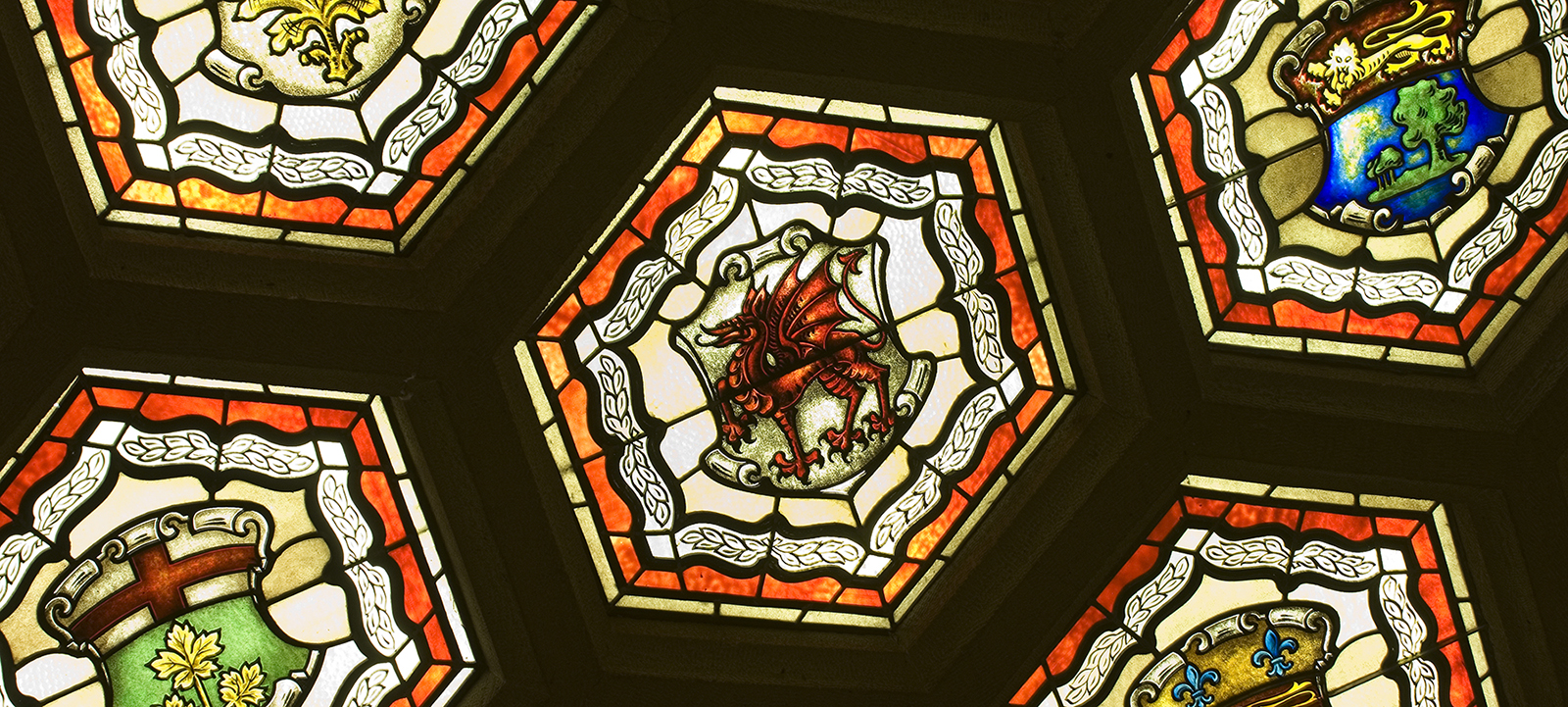
In the first of a series of four articles, we look at three supernatural creatures you’ll encounter in Parliament Hill’s Centre Block.
In February 2019, the Senate moved to the Senate of Canada Building, a former train station built in 1912. The Senate will occupy this temporary location while Parliament’s Centre Block — the Senate’s permanent home — is rehabilitated.
Although Centre Block is shuttered for rehabilitation work, Canadians can still experience its art and architecture — as well as the Senate of Canada Building’s — through the Senate’s immersive virtual tours.
Dragons prowl its rafters. Unicorns roam its halls. It’s even home to a pair of phoenixes.
These are just a few of the mythical beasts that embellish the stone, woodwork and stained glass of Parliament Hill’s Centre Block.
They’ve been here, in one form or another, since the construction of Canada’s original Parliament Building in 1865. Gothic Revival, the signature architectural style of that era, sought to evoke the soaring grandeur of medieval cathedrals, distinguished by the grotesques that engulf their vaults, spires and pinnacles.
“These creatures served as symbols,” House of Commons Curator Johanna Mizgala explained. “They were a way of teaching about good and evil, right and wrong, moral and immoral conduct in a way that’s scary, yet abstract.”
Victorian architects — including the designers of the original Parliament Building — deliberately incorporated these medieval creatures into their plans, with the intention of conveying a slightly subtler message. Alluding to parliament’s legislative role, the creatures here represent primal forces that can sow chaos but can also be enlisted as allies and guardians.
“These symbols tell very old stories,” Ms. Mizgala said. “They illustrate fundamental principles of our parliamentary system — a sense of coming together to create something that is bigger than the sum of its parts.”
Here are a few creatures to be on the lookout for:
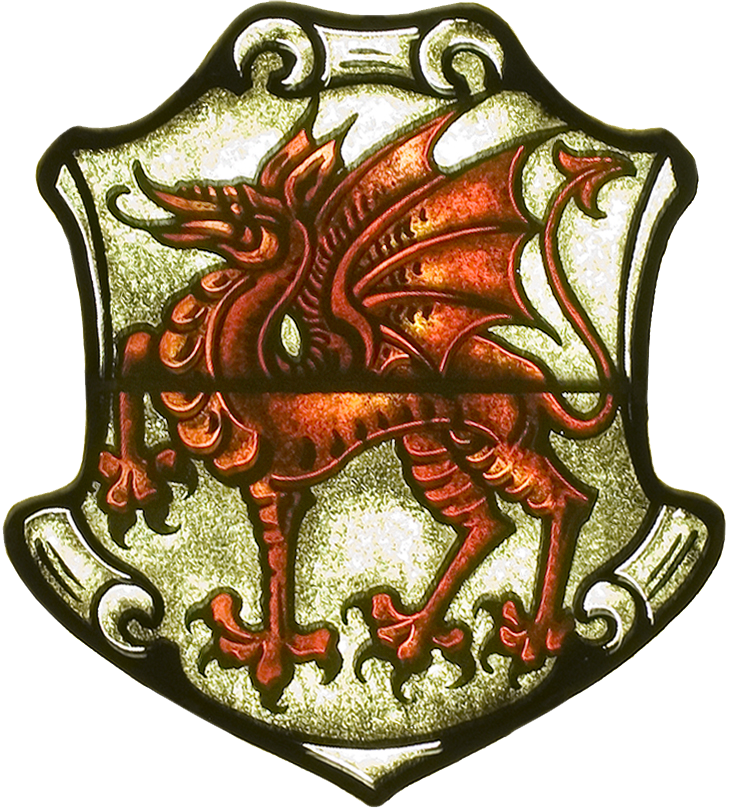
Dragon
The lion may be king of beasts, but 600 years before it became a symbol of England, dragons ruled the British Isles and its patchwork of warring kingdoms.
Already a familiar figure in the myths of ancient Greece and Mesopotamia, dragons arrived in Britain with the Celts in the fourth century BC.
A new wave of dragon-obsessed invaders — the Angles, Saxons and Jutes — appeared in the fourth century AD. It was said that Sigurd, the hero of their legends, slew a dragon and gained supernatural protection by bathing in its blood. England’s first epic hero, Beowulf, died battling a fire-breathing dragon.
Over time, the dragon evolved into a symbolic guardian, an archetype of valour and strength. A dragon banner accompanied King Alfred the Great’s army when it defeated Viking invaders at the Battle of Edington in 878. Harold II, England’s last Anglo-Saxon king, flew a dragon standard at the Battle of Hastings in 1066, albeit with less successful results.
“The dragon was a foe that became a friend,” Ms. Mizgala said. “It’s a formidable beast that serves both for protection and power.”
Parliament Hill’s dragons evoke pre-Norman Conquest England, where the first glimmers of our modern constitutional monarchy appeared in the King’ council, the Witan. The red dragon, in particular, still represents the Welsh, one of the cultures that contributed to founding the Dominion of Canada.
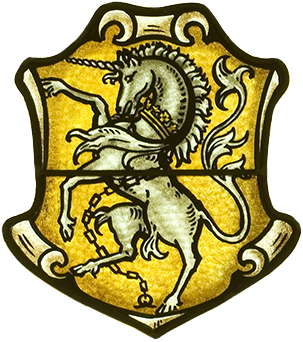
Unicorn
If the dragon predates the lion, the unicorn has been the lion’s rival — and frequent ally — for nearly as long. In Babylonian mythology, the lion, representing summer, ruled through strength and dominance. He chased the unicorn, representing spring, which ruled through harmony and co-operation.
The wildly fanciful unicorn may have some basis in reality. The Greek historian Ctesias travelled throughout the Persian Empire in the fifth century BC. He described what he thought was a wild ass, a creature with a white body, a purple head and a single horn. Historians believe he may have been describing an Indian rhinoceros.
In the Middle Ages, the unicorn became a symbol of purity and fortitude coupled with wild, ungovernable strength.
The unicorn came to Canada by way of Scotland, where it had been a heraldic emblem for centuries. In 1603, King James VI of Scotland inherited the English throne from his childless cousin, Queen Elizabeth I. He became James I of England and combined the Scottish unicorn with the English lion in his official coat of arms.
On Parliament Hill, the unicorn is often depicted facing the lion and collared with a gold chain.
“The lion and the unicorn are traditionally foes,” Ms. Mizgala said, “but they come together here and become the standard bearers for Canada’s coat of arms.”
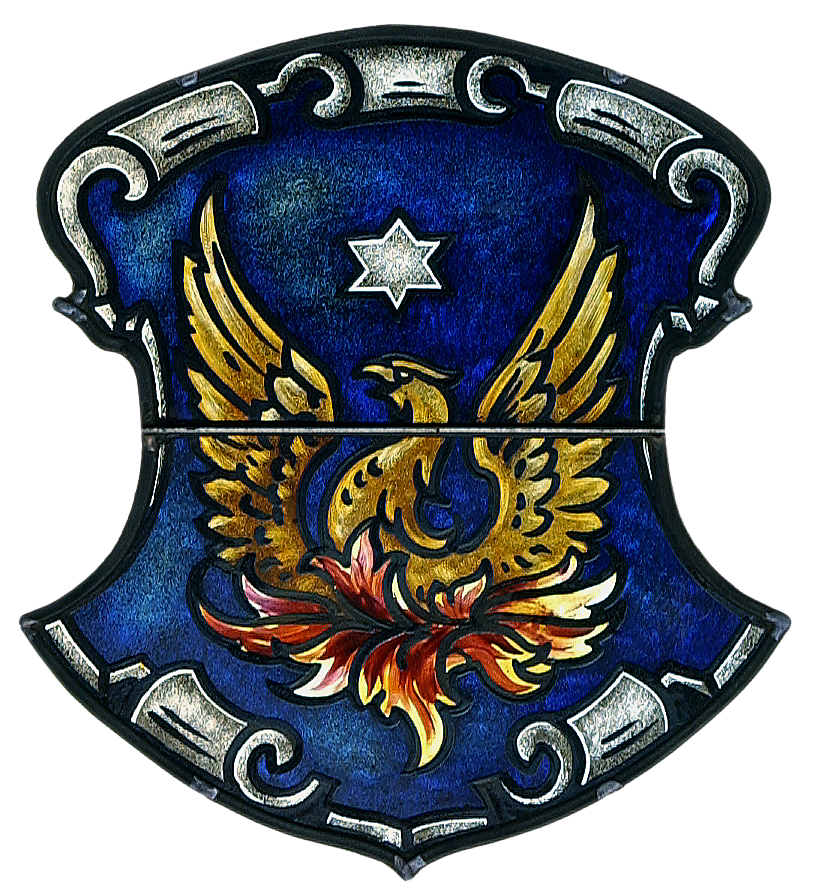
Phoenix
The phoenix is an ancient symbol of rebirth and reinvention. The myth of the magnificent golden bird that dies in a blaze of fire and then rises, reborn, from its own ashes, dates to eighth-century BC Greece.
It was a powerful image, later embraced by early Christians, who saw the phoenix as an allegory for the resurrection of Christ.
In the context of Parliament Hill, it symbolizes the 1916 fire that destroyed the original Parliament Building and the rebirth of Centre Block just four years later. But the metaphor runs at several levels.
“Parliament is based on a foundation of legislation, tradition and established practice,” Ms. Mizgala explained. “But we’re always free to challenge them and change them. The phoenix is a symbol of Parliament’s capacity to reinvent itself.”
The phoenix, introduced into Centre Block just as the country was emerging from the First World War, ultimately represents new beginnings.
“This was a period of enormous change. The country was coping with the devastation of the war as well as the 1916 fire,” Ms. Mizgala said. “What was the country going to be after this massive loss of life? It forced a complete rethinking of who we were.”
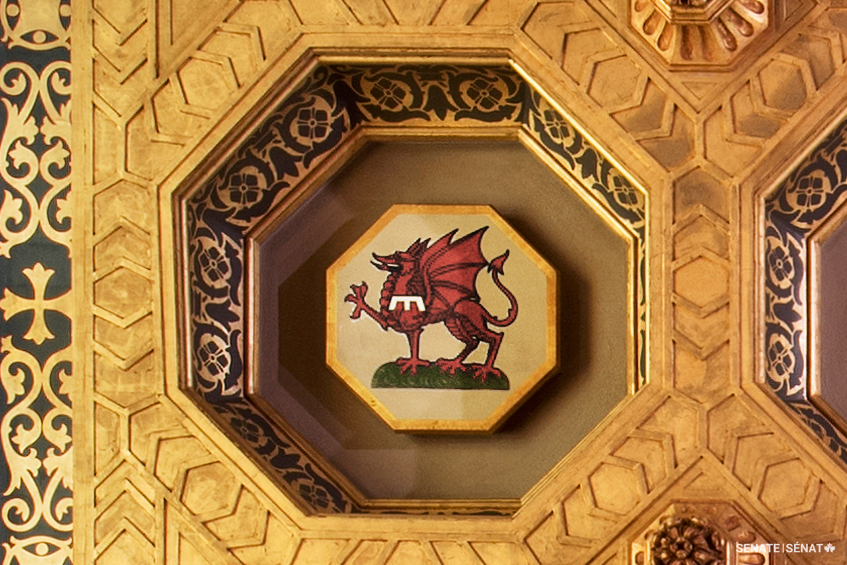 A red dragon, the ancient heraldic symbol of Wales, is depicted on the ceiling of the Senate Chamber in Centre Block.
A red dragon, the ancient heraldic symbol of Wales, is depicted on the ceiling of the Senate Chamber in Centre Block.
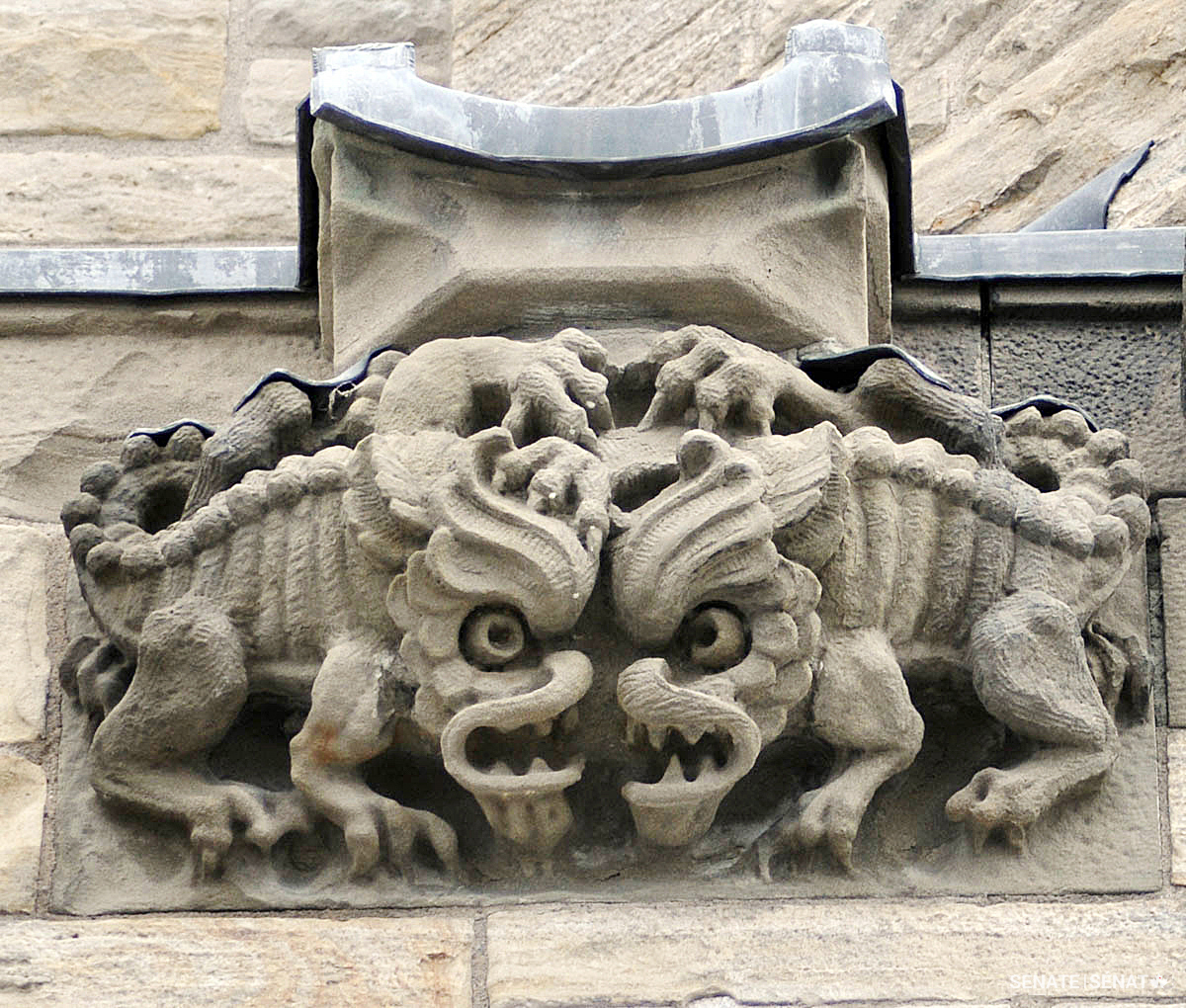
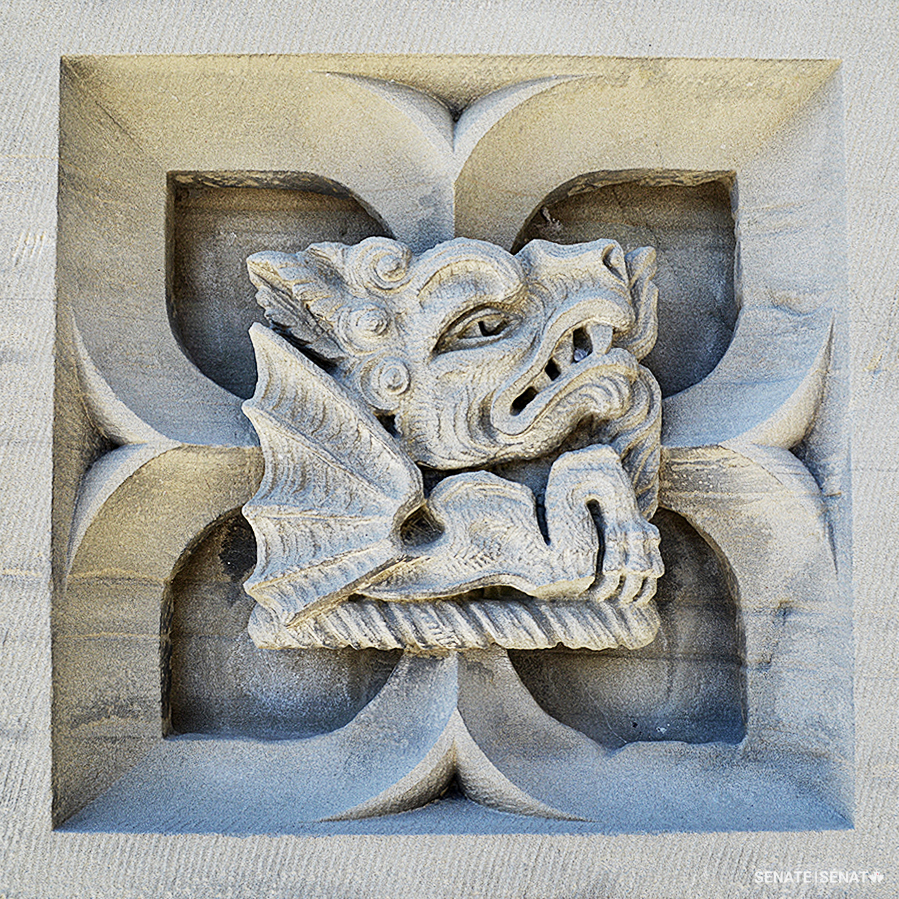
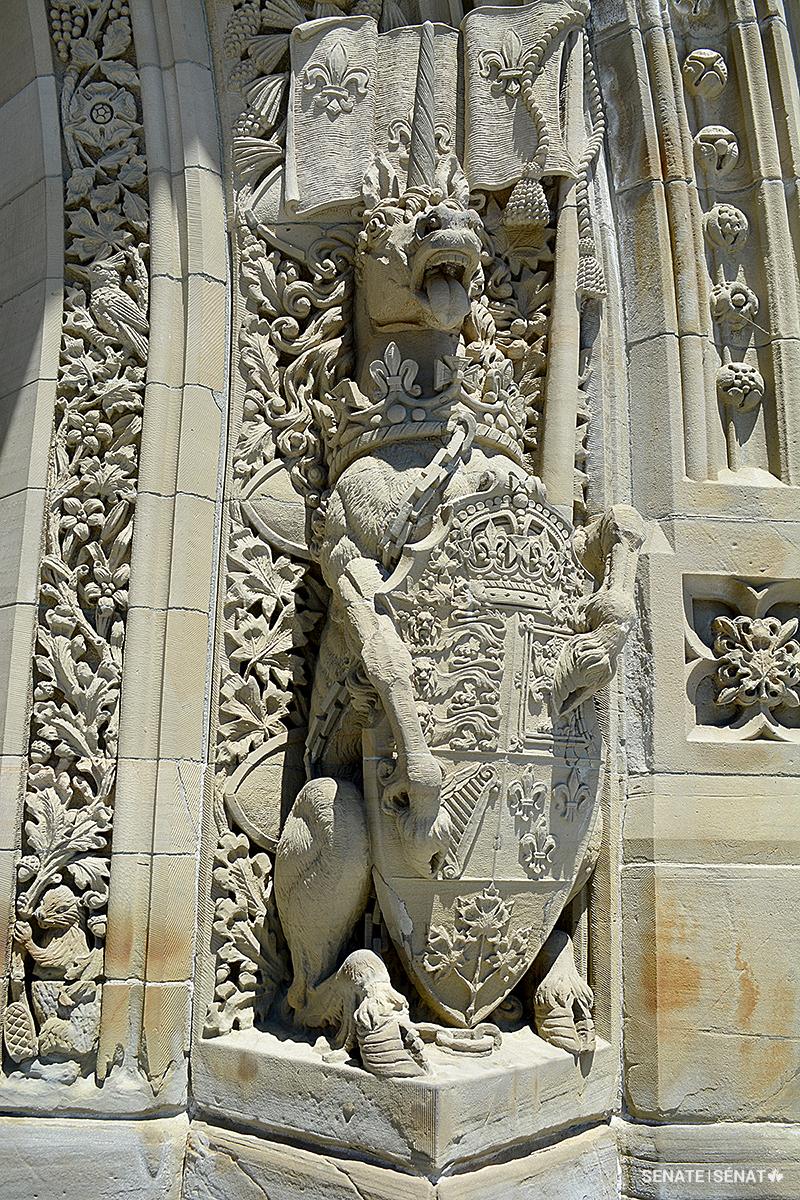
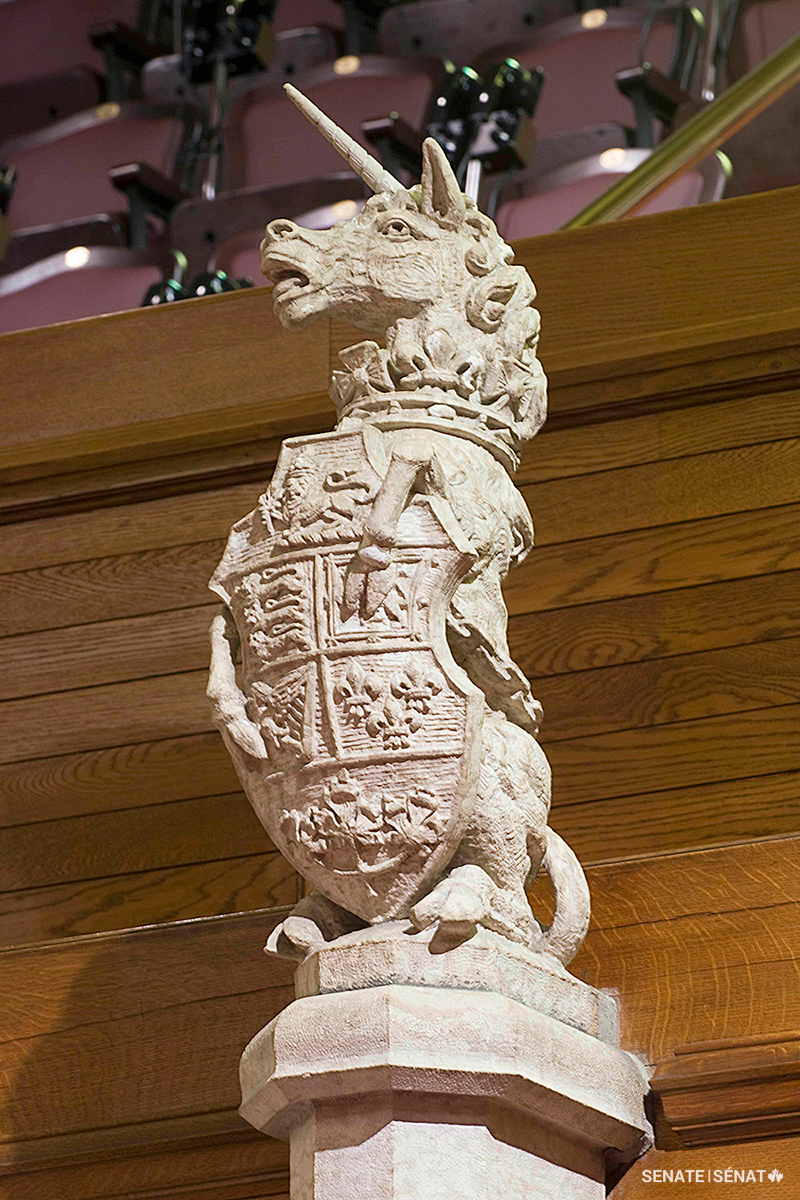
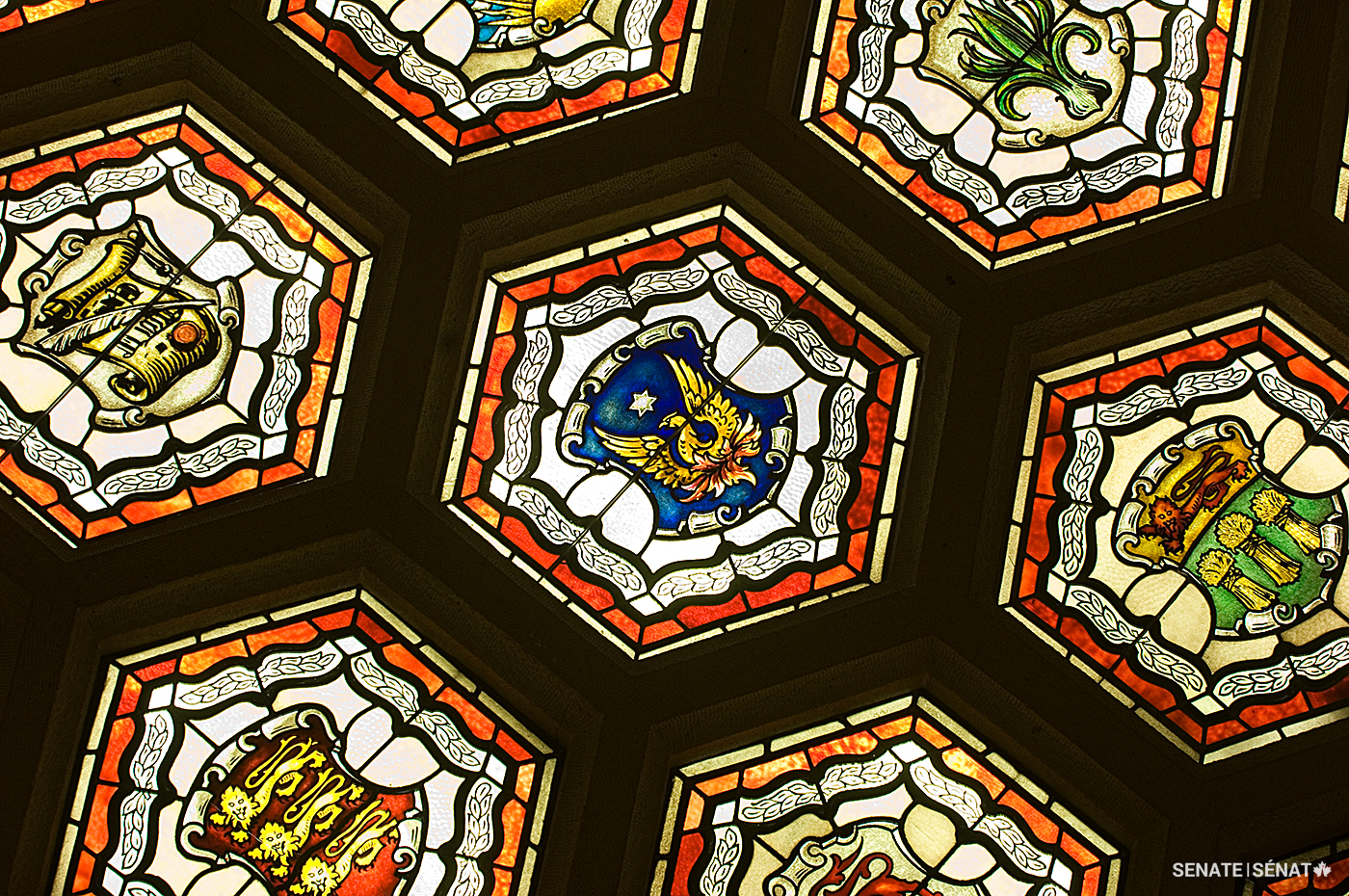
A phoenix, rising from its ashes, appears among the 105 stained-glass panels in the Senate foyer ceiling. It alludes to the 1916 Parliament Hill fire and the resurrection of Centre Block.


